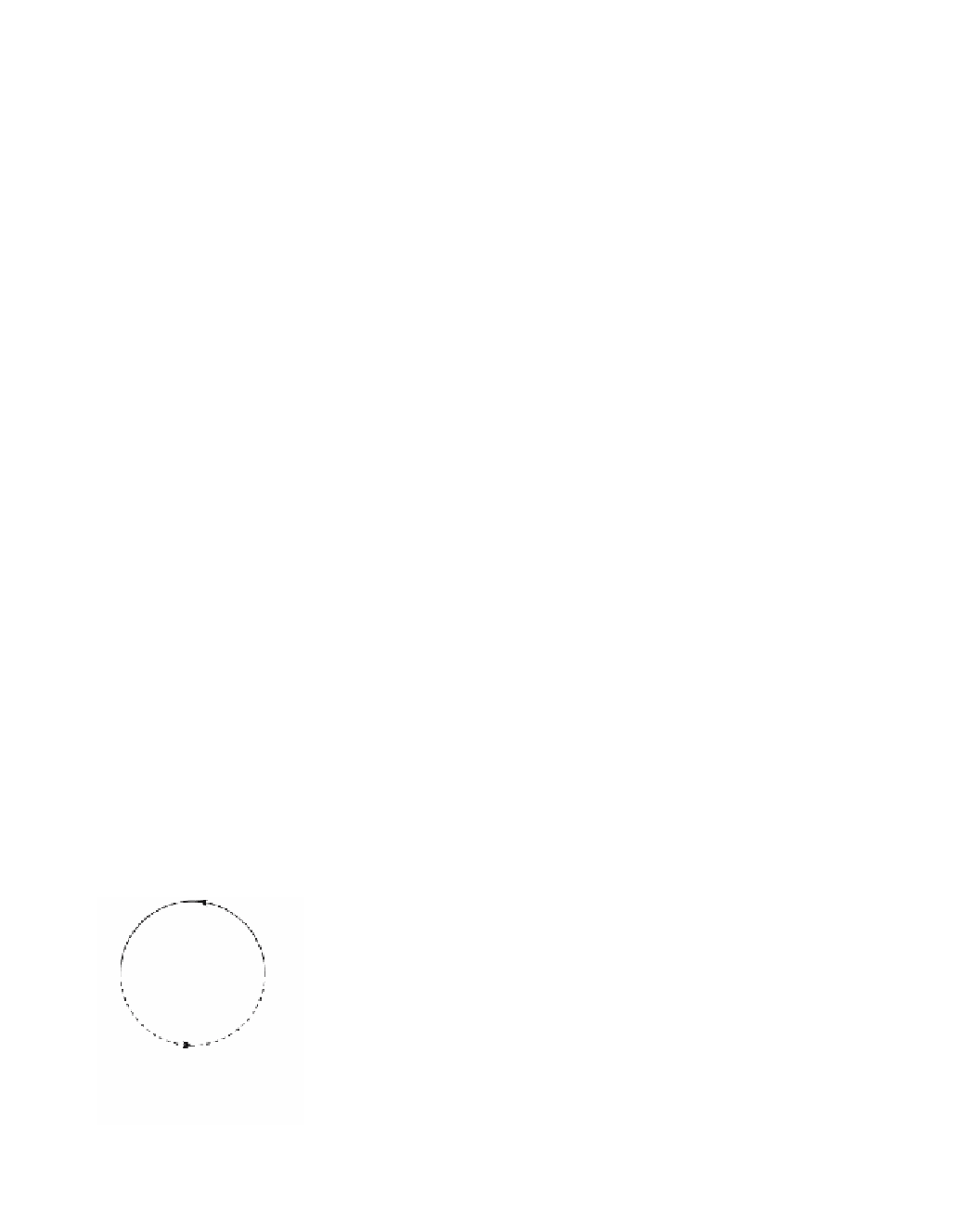Graphics Reference
In-Depth Information
ologically? There are quite a few different definitions that all lead to the same space
(up to homeomorphism). Each gives a little different insight into its structure.
A second definition of P
n
:P
n
is the set of lines through the origin in
R
n+1
.
Justification:
Except for the fact that the origin is missing, the equivalence class
[x
1
,x
2
,...,x
n+1
] is just such a line through the origin, so that there is a natural one-
to-one correspondence of points. (The topologies are assumed to match under this
correspondence.)
A third definition of P
n
:P
n
is the unit sphere
S
n
with antipodal points identified,
that is,
n
n
PS
=
/~,
where
p
~-
p
.
The relation ~ which relates points of
S
n
Justification:
to their antipodal points is
an equivalence relation, and the map
(
)
n
+
1
n
R0 S
-
~
Æ
/ ~,
x
D
x
D
x
]
Æ
È
˘
˙
12
n
+
1
[
xx
,
,...,
x
,
,...,
12
n
+
1
Í
D
where D =|(x
1
,x
2
,...,x
n+1
)|, is clearly a homeomorphism.
A fourth definition of P
n
:P
n
is the unit disk
D
n
in the plane with antipodal points
on its boundary identified, that is,
n
n
PD
=
~,
S
n-1
.
where ~ is induced from the relations
p
~-
p
for
p
Justification:
See Figure 5.14 where the labels and arrows are trying to indicate the
identifications. The boundary of the upper hemisphere
S
+
is just
S
n-1
. It is easy to see
a
a
disk with antipodal boundary
points identified
Figure 5.14.
Visualizing the projective plane.



